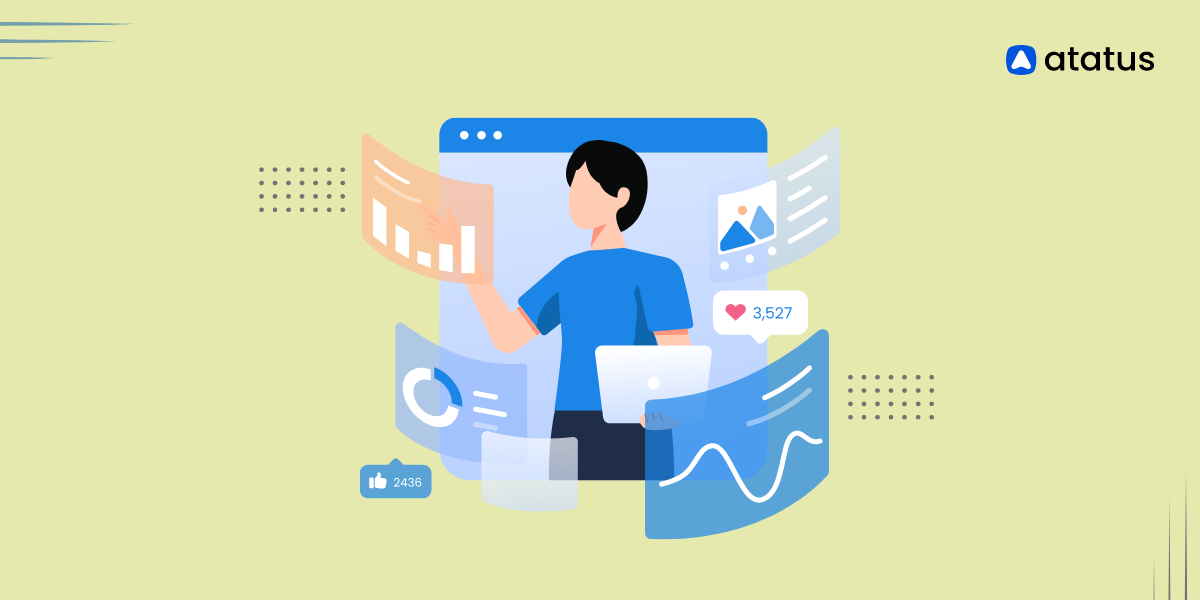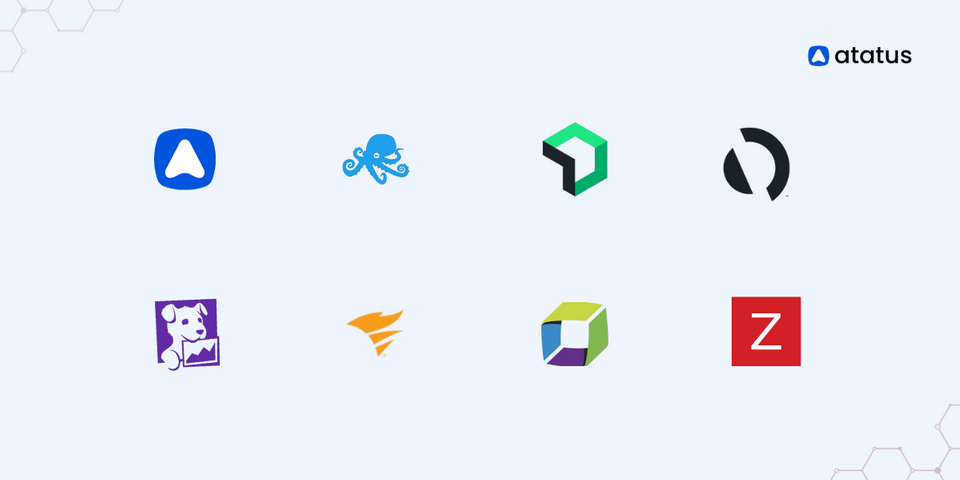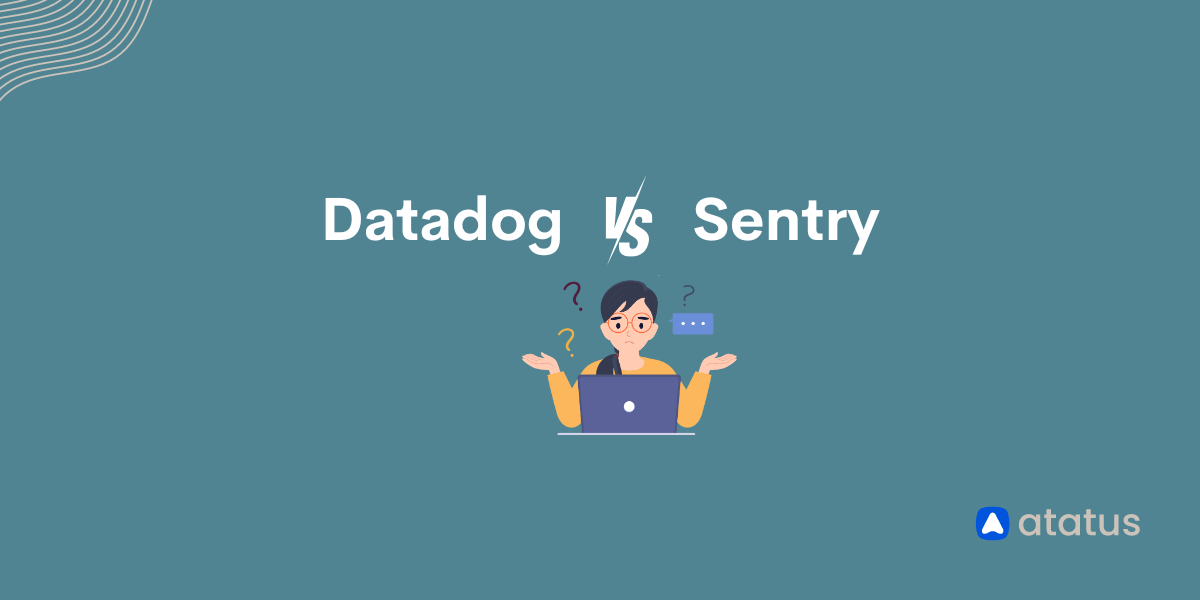What is APM? Understanding application performance monitoring
The rapid advancement of technology has revolutionized the way businesses operate and engage with their customers. Today's customers demand fast and intuitive interactions that are easy to use and help them get things done quickly.
A delay of even a few seconds can lead to significant drop-offs in engagement and conversions. According to Google's findings, just a 100-millisecond lag can reduce revenue by 1%, and a half-second delay can cause a 20% drop in search engine traffic.
This highlights the critical role of monitoring applications in quickly identifying and addressing performance problems to maintain smooth business operations.
This guide will give you a clear understanding of "What is APM?" and the business value it delivers, along with its features and benefits for implementing it within your organization.
Let's get Started!
In this blog post
- What is APM?
- Why is APM important?
- How does APM work?
- APM vs Observability
- Key APM metrics
- Core features of APM
- Benefits of APM
What is APM?
Application Performance Monitoring(APM) is a process of monitoring, managing and optimizing web application performance by tracking key application performance metrics using telemetry data and monitoring software. The goal of APM is to ensure optimal application performance, improving user experience and maintaining high reliability.
APM tools are often used to gain comprehensive insights into the real-time performance of web applications and the infrastructure supporting them. They monitor app performance, identify performance problem, and ensure smooth operation, keeping users satisfied and apps reliable.
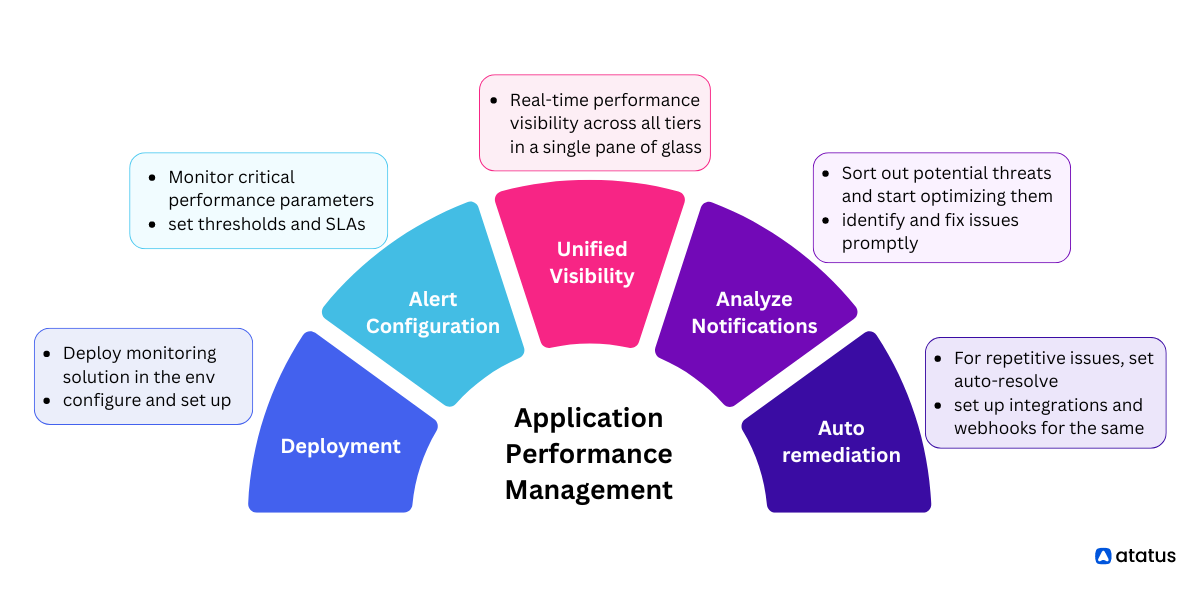
What does APM stand for?
APM stands for Application Performance Monitoring. Though in this context APM includes application performance monitoring, the term can also refer to:
- Application monitoring
- Application performance management
- Application performance
- Performance monitoring
These terms vary in scope but share the common goal of providing insights into how well applications perform.
Why is APM important?
In the current age of digital technology, where we depend heavily on apps for everything from shopping to socializing, ensuring the applications run smoothly and without delay is crucial. When these web applications crash, load slowly, or fail to load, users often experience significant frustration. This negative user experience can lead to brand damage or a loss in revenue for businesses.
However, with the complexity introduced by technologies like cloud computing, mobile apps, and IoT devices, maintaining optimal performance has become increasingly challenging. This is where Application Performance Monitoring (APM) becomes essential.
But why do we need APM? APM tools keep track of how quickly an app responds, if there are any errors, and how much of the computer's resources the app is using. This is crucial for fixing performance problems before they become a big problem for users. While modern applications may seem straightforward, they are built upon a complex ecosystem of technologies, dependencies, and services.
Application performance monitoring tools enable real-time detection and resolution of performance bottlenecks, ensuring low latency, high availability, and efficient resource utilization. Prioritizing APM is essential for businesses reliant on digital applications to remain competitive.
How does APM work?
Application Performance Monitoring (APM) works by integrating agents into an application's runtime environment to collect metrics such as response times, error rates, and resource usage.
These agents transmit data to a centralized APM tool such as Atatus, where it is processed in real-time, providing insights through dashboards and alerts.
When setting up an APM (Application Performance Management) platform, three key types of data should be considered:
- Metrics: These are numerical measures used to understand the performance of a specific process. Changes in metrics can signal underlying issues.
- Traces: A trace follows a request through its entire journey across all components and services in the network. It provides detailed data points that help identify errors, diagnose security threats, and detect network problems.
- Log: Log files contain information about user activities and events. They are used for root cause analysis, understand why performance metrics fluctuate, and identify the sequence of events within a system.
APM vs Observability
Application Performance Monitoring (APM) tools are essential for monitoring and optimizing specific application performance metrics. Here are some questions you might ask when using APM:
- What is the current health status of the application?
- Are there any performance bottlenecks in the application?
- Are there any recurring errors or exceptions?
However, in today's complex application architectures, relying only on APM may not suffice.
With multiple runtimes and diverse architecture layers, a holistic approach becomes necessary to pinpoint root causes of issues proactively. APM provides summarized metrics but lacks deeper insights into dynamic stack behaviour.
To effectively manage and troubleshoot such complexities, IT teams adopt a comprehensive strategy that integrates various monitoring tools and practices beyond traditional APM, ensuring robust performance management.
Observability provides a comprehensive view of your entire system's health and performance, regardless of its complexity or size. While APM is a subset of observability focused specifically on application performance, observability aims to offer a comprehensive view of overall system behaviour.
Observability goes beyond traditional application performance monitoring(APM) by incorporating various data such as logs, events, and traces, offering a multi-faceted understanding of system behaviour. This broader scope allows for a better understanding of system behaviour, facilitating easier identification and resolution of issues across the whole stack.
Use APM When:
- You need to track the performance of applications.
- Quick detection and resolution of performance issues are essential.
- Improving application response times and enhancing user experience are priorities.
Use Observability When:
- You need a comprehensive view of the entire system, including applications, infrastructure, and network.
- You need to understand the root causes of issues across the entire stack.
- Managing and understanding the performance of complex environments such as microservices, and distributed systems is necessary.
Key APM metrics
- Throughput: Number of requests that a system can handle per unit of time.
- Response time: Time taken for a system to respond to a request from a user.
- Request rates: Number of requests received by the system per unit of time.
- Number of instances: Total number of servers or instances of the application running concurrently.
- Exceptions: Measure of the frequency and severity of errors or exceptions that occur within the application.
- Failure rate/Error rate: Percentage of requests that fail out of the total requests made.
- Application performance index (apdex) score: Measure of user satisfaction with the performance of an application.
- Database Response Time: Time taken by the database entry application to send a request to the server and receive a response back.
- Slow Function Calls: Measure of the duration of function calls that take longer than expected.
- Service Maps: Visualization of the interactions between different services within the application.
- Deployment Tracking: Measure of the performance impact of code deployments and changes.
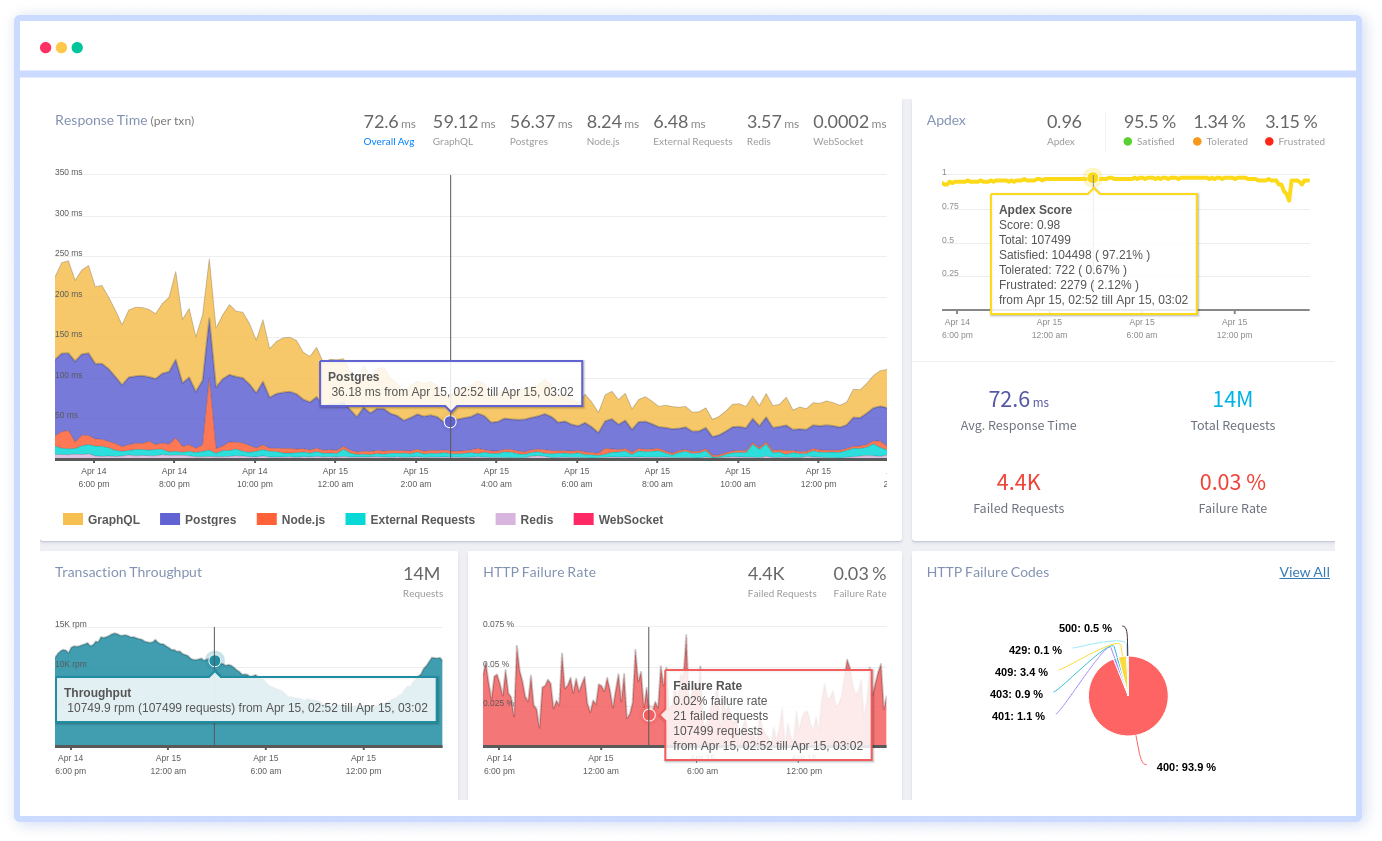
Core features of APM
- Full-stack visibility comprehensively monitors the entire stack, offering end-to-end observability that focuses on overall user satisfaction and interaction quality with applications.
- Support for custom metrics enables to monitor specific performance indicators customized to their application's unique needs, providing a deeper understanding beyond standard metrics.
- Cross-platform application monitoring ensures smooth performance across different device types, including both mobile and desktop applications.
- Root cause analysis involves analysing performance data to identify the underlying reasons behind issues impacting application performance.
- Performance dashboards provide real-time visibility into performance metrics, allowing quick identification of issues.
- Integration with third-party services enables the APM tool to adapt to a growing and evolving infrastructure.
The above-listed core features represent the fundamental functionalities of Application Performance Monitoring (APM). However, APM capabilities extend beyond these core features. Here are a few additional common areas where APM capabilities extend:
- Real user monitoring captures user interactions, which helps to understand the end-user experience, providing clarity into user behaviour.
- Synthetic monitoring involves simulated user interactions to identify potential problems before they impact users, ensuring prevention of performance issues.
- API monitoring tracks the performance and availability of APIs to understand how application performance is impacted by third-party services.
- Container monitoring provides comprehensive insights into the performance, health, and resource usage of containerized applications.
Benefits of APM
APM brings a wide range of advantages for both technical teams and the overall business. By improving application performance, APM tools help organizations deliver better user experiences, and identify application performance issues before they affect real users. Here are the key benefits in detail:
- Enhanced Stability and Uptime: Applications are more reliable with fewer interruptions, leading to better service availability.
- Reduced Performance Incidents: There are fewer issues with performance, making the application run more smoothly.
- Faster Issue Resolution: Problems with performance are found and fixed quickly, keeping everything running well.
- Accelerated Releases: New software updates and features are released faster and with better quality.
- Increased Productivity: Developers and operations teams get more done because they spend less time fixing issues.
- More Innovation Time: Teams have more time to work on new ideas and improvements.
- Enhanced User Experience: Users have a better experience with faster, more reliable applications.
- Revenue Growth: Better performance and user satisfaction can lead to more sales and higher revenue.
- Cost Reduction: Fewer performance issues and better resource use reduce operational costs.
End-to-End Application Monitoring with Atatus
Atatus offers real-time application monitoring solutions to track and enhance the performance of your frontend, backends, logs, and infrastructure applications. Our technology can collect millions of performance data points from your apps, allowing you to swiftly rectify problems and provide excellent digital user experiences.
Atatus Application Performance Monitoring (APM) may benefit your business by providing a full picture of your application, including how it works, where performance bottlenecks occur, which users are most impacted, and which faults damage your frontend, backend, and infrastructure code.
#1 Solution for Logs, Traces & Metrics
APM
Kubernetes
Logs
Synthetics
RUM
Serverless
Security
More

